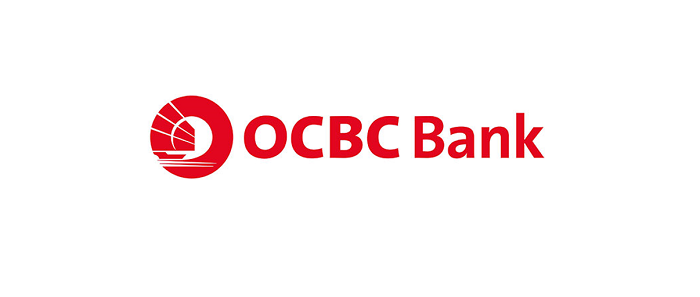

The Positives
+ NIM caught up by expanding 6 bps YoY and 5 bps QoQ. The pleasant surprise in NIM expansion was primarily due to the repricing of loans kicking in during 3Q18 which contributed to approximately 4 bps of the QoQ increase, and the release of surplus USD deposits back to the market contributed to the remaining 1 bps. (Recall that last quarter’s softer NIM was due to OCBC’s reluctance in raising loan pricing to provide stability for customers.) In this quarter, the repricing of loans portfolio came mostly from Singapore, and the full impact will be felt in 4Q18 when Hong Kong reprices its loans. We expect NIM to continue expanding in the next quarter but more moderately as compared to this quarter.
+ Loans growth remained robust at +10.4% YoY. Loans expanded the most in Greater China (15.0% YoY) and Singapore (+8.0% YoY). Malaysia loans grew 7.2% YoY, the highest in 14 months. Non-bank customer deposits fell by 1.2% while OCBC’s LDR increased to 88.5% (2Q18: 85.9%) due to the release of excess liquidity. Management is comfortable with current liquidity levels and guides LDR in the range of 85-90%.
+ NPL stable at 1.4%; Credit Costs normalised to 14 bps. NPL formation rose 22.0% QoQ and half of this increase was due to housing loans while the rest was due to the trade industry. There is no concentration of new NPL from any sector in particular. Management guided credit cost for 2019 at 12-15 bps.
+ Non-interest income achieve relative stability in a volatile market by growing 0.4% YoY. Fee income was underpinned by growth in WM, Trade and Loan related fee income of 6%, 11% and 7% respectively. The decrease in insurance revenue was mainly due to a fall of 28% in life assurance profit (last year recorded higher marked-to-market gains due to favourable market conditions). Increase in net trading income of 81% YoY offset the 94% YoY decrease in net realised gains from investment securities.
The Negatives
– CASA ratio dipped to 47.5% in 3Q18 (3Q17: 50.5%). The fall in CASA balance was due to some migration of CASA balances to fixed deposits, structured products, including single premium products offered by GEH during the quarter and retails bonds.
– CIR increased to 42.0% (3Q17: 41.4%), due to the rise in operating costs of 6.8% YoY, while total income rose 5.3% YoY. Growth in operating costs was driven by a 7.1% YoY rise in staff costs associated with annual base salary increments and a rise in expenses linked to business volume growth.
Outlook
The NIM outlook for the next quarter would be a slight bias on the positive side of this quarter’s NIM of 1.72%. OCBC reiterated their repricing stance of ensuring that the rise in interest is sustainable enough before repricing to avoid instability to customers. Hence, NIM improvements might be bumpy in the next few quarters. The full impact of NIM repricing will be seen in 4Q18 as Hong Kong reprices its loans. Hong Kong’s loans portfolio is pegged to HIBOR (40%), prime rates (40%) and fixed rate (20%); a rise in prime rates would, therefore, be very beneficial.
The O&G sector’s NPL might only see a recovery in 2H19 because the increase in oil prices are not substantial enough to reflect a rise in charter rates. Oil price rose, but charter rates are still not indicating a similar recovery.
If the trade war escalates, the management expects China and Hong Kong to be most impacted, followed by Singapore and Malaysia. If manufacturers decide to shift their supply chain to South East Asia, Vietnam would likely benefit the most, followed by Malaysia and Thailand. In any case, a trade war will shrink the entire global economy, and it is inevitable that everyone will be affected.
In conclusion, earnings were boosted by robust loans growth, NIM expansion and low allowance. With the expectation of one more rate hike in December and three more in 2019 (according to the FOMC dot plots), NIM will continue to expand as OCBC reprices up its loans as interest rates rise.
Important Information
This report is prepared and/or distributed by Phillip Securities Research Pte Ltd ("Phillip Securities Research"), which is a holder of a financial adviser’s licence under the Financial Advisers Act, Chapter 110 in Singapore.
By receiving or reading this report, you agree to be bound by the terms and limitations set out below. Any failure to comply with these terms and limitations may constitute a violation of law. This report has been provided to you for personal use only and shall not be reproduced, distributed or published by you in whole or in part, for any purpose. If you have received this report by mistake, please delete or destroy it, and notify the sender immediately.
The information and any analysis, forecasts, projections, expectations and opinions (collectively, the “Research”) contained in this report has been obtained from public sources which Phillip Securities Research believes to be reliable. However, Phillip Securities Research does not make any representation or warranty, express or implied that such information or Research is accurate, complete or appropriate or should be relied upon as such. Any such information or Research contained in this report is subject to change, and Phillip Securities Research shall not have any responsibility to maintain or update the information or Research made available or to supply any corrections, updates or releases in connection therewith.
Any opinions, forecasts, assumptions, estimates, valuations and prices contained in this report are as of the date indicated and are subject to change at any time without prior notice. Past performance of any product referred to in this report is not indicative of future results.
This report does not constitute, and should not be used as a substitute for, tax, legal or investment advice. This report should not be relied upon exclusively or as authoritative, without further being subject to the recipient’s own independent verification and exercise of judgment. The fact that this report has been made available constitutes neither a recommendation to enter into a particular transaction, nor a representation that any product described in this report is suitable or appropriate for the recipient. Recipients should be aware that many of the products, which may be described in this report involve significant risks and may not be suitable for all investors, and that any decision to enter into transactions involving such products should not be made, unless all such risks are understood and an independent determination has been made that such transactions would be appropriate. Any discussion of the risks contained herein with respect to any product should not be considered to be a disclosure of all risks or a complete discussion of such risks.
Nothing in this report shall be construed to be an offer or solicitation for the purchase or sale of any product. Any decision to purchase any product mentioned in this report should take into account existing public information, including any registered prospectus in respect of such product.
Phillip Securities Research, or persons associated with or connected to Phillip Securities Research, including but not limited to its officers, directors, employees or persons involved in the issuance of this report, may provide an array of financial services to a large number of corporations in Singapore and worldwide, including but not limited to commercial / investment banking activities (including sponsorship, financial advisory or underwriting activities), brokerage or securities trading activities. Phillip Securities Research, or persons associated with or connected to Phillip Securities Research, including but not limited to its officers, directors, employees or persons involved in the issuance of this report, may have participated in or invested in transactions with the issuer(s) of the securities mentioned in this report, and may have performed services for or solicited business from such issuers. Additionally, Phillip Securities Research, or persons associated with or connected to Phillip Securities Research, including but not limited to its officers, directors, employees or persons involved in the issuance of this report, may have provided advice or investment services to such companies and investments or related investments, as may be mentioned in this report.
Phillip Securities Research or persons associated with or connected to Phillip Securities Research, including but not limited to its officers, directors, employees or persons involved in the issuance of this report may, from time to time maintain a long or short position in securities referred to herein, or in related futures or options, purchase or sell, make a market in, or engage in any other transaction involving such securities, and earn brokerage or other compensation in respect of the foregoing. Investments will be denominated in various currencies including US dollars and Euro and thus will be subject to any fluctuation in exchange rates between US dollars and Euro or foreign currencies and the currency of your own jurisdiction. Such fluctuations may have an adverse effect on the value, price or income return of the investment.
To the extent permitted by law, Phillip Securities Research, or persons associated with or connected to Phillip Securities Research, including but not limited to its officers, directors, employees or persons involved in the issuance of this report, may at any time engage in any of the above activities as set out above or otherwise hold an interest, whether material or not, in respect of companies and investments or related investments, which may be mentioned in this report. Accordingly, information may be available to Phillip Securities Research, or persons associated with or connected to Phillip Securities Research, including but not limited to its officers, directors, employees or persons involved in the issuance of this report, which is not reflected in this report, and Phillip Securities Research, or persons associated with or connected to Phillip Securities Research, including but not limited to its officers, directors, employees or persons involved in the issuance of this report, may, to the extent permitted by law, have acted upon or used the information prior to or immediately following its publication. Phillip Securities Research, or persons associated with or connected to Phillip Securities Research, including but not limited its officers, directors, employees or persons involved in the issuance of this report, may have issued other material that is inconsistent with, or reach different conclusions from, the contents of this report.
The information, tools and material presented herein are not directed, intended for distribution to or use by, any person or entity in any jurisdiction or country where such distribution, publication, availability or use would be contrary to the applicable law or regulation or which would subject Phillip Securities Research to any registration or licensing or other requirement, or penalty for contravention of such requirements within such jurisdiction.
This report is intended for general circulation only and does not take into account the specific investment objectives, financial situation or particular needs of any particular person. The products mentioned in this report may not be suitable for all investors and a person receiving or reading this report should seek advice from a professional and financial adviser regarding the legal, business, financial, tax and other aspects including the suitability of such products, taking into account the specific investment objectives, financial situation or particular needs of that person, before making a commitment to invest in any of such products.
This report is not intended for distribution, publication to or use by any person in any jurisdiction outside of Singapore or any other jurisdiction as Phillip Securities Research may determine in its absolute discretion.
IMPORTANT DISCLOSURES FOR INCLUDED RESEARCH ANALYSES OR REPORTS OF FOREIGN RESEARCH HOUSE
Where the report contains research analyses or reports from a foreign research house, please note:

Min Ying covers the Banking and Finance sectors. She has experience in external audit and corporate tax roles.
She graduated with a Bachelor of Accountancy with a major in Finance from SMU.